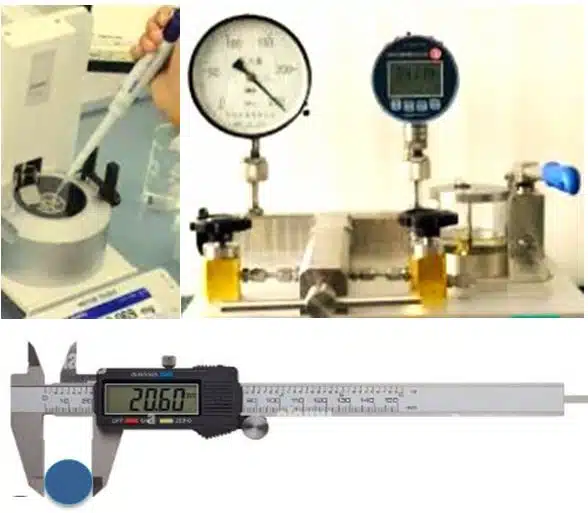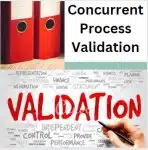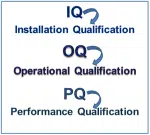Calibration in the pharmaceutical industry is an important process. It refers to ensure the accuracy and precision of instruments and equipment used in manufacturing, testing, and quality control. Proper calibration ensures that the data generated is reliable and that the products meet the required quality standards.
Table of Contents
Introduction
The pharmaceutical industry uses a variety of tools and equipment for calibration, such as pipettes, balances, spectrophotometers, chromatographs, and thermal analysis equipment. The process of calibration entails comparing an instrument’s readings to a recognized standard in order to identify to correct any deviations and guarantee that the tool produces reliable and precise results. This is essential for supporting the processes of Qualification and validation
Principles of Calibration
Calibration principles ensure accuracy by comparing measurements against standards, adjusting instruments for precision, documenting procedures, and maintaining consistency to meet regulatory requirements and improve data reliability in various applications.

Importance of Calibration in the pharmaceutical industry
Compliance to Regulatory Standards
Some regulatory bodies such as the Food and Drug Administration (FDA) in the United States, the European Medicines Agency (EMA) in Europe, the Good Manufacturing Practice (GMP), the World Health Organization (WHO) and the International Council for Harmonisation (ICH) enforce strict guidelines for pharmaceutical manufacturing.
Compliance with these regulations is mandatory to ensure product quality, safety, and efficacy. Calibration is an essential requirement outlined in these regulatory standards, and failure to adhere to calibration protocols can lead to regulatory non-compliance, resulting in costly penalties, product recalls, and damage to the company’s reputation.
Quality Complies in Manufacturing
Pharmaceutical manufacturers employ various analytical instruments to assess the quality and purity of raw materials, intermediates, and finished products. Calibration of these instruments is essential to obtain reliable analytical data, detect impurities or deviations from specifications, and maintain batch-to-batch consistency. By ensuring the accuracy of measurement instruments, calibration contributes to robust quality control processes, reducing the likelihood of producing substandard or contaminated drugs.
Patient safety and risk prevention:
The impacts of using uncalibrated instruments in pharmaceutical operations extend beyond financial and regulatory consequences—they pose significant risks to patient safety. Inaccurate measurements can lead to medication errors, adverse drug reactions, and treatment failures, getting in danger the well-being of patients. By implementing robust calibration programs, pharmaceutical companies mitigate these risks and demonstrate their commitment to producing high-quality, dependable medications that prioritize patient safety above all else.
Compliance and Documentation
Calibration activities must be comply to national or international standards, such as those provided by the National Institute of Standards and Technology (NIST) in the United States or the International Organization for Standardization (ISO), Bureau of Indian Standards (BIS) for india, Bangladesh Standards and Testing Institution (BSTI) for bangladesh. Maintaining comprehensive documentation of calibration procedures, results, and certificates is essential for audit trails, regulatory compliance, and quality assurance purposes.
Update Technological Advancement
As technology advances, new measurement techniques and instruments emerge, presenting both opportunities and challenges for calibration. Pharmaceutical companies must stay abreast of technological developments and ensure that their calibration procedures evolve accordingly to accommodate novel instrumentation and methodologies.
Process of Calibration
The calibration process involves comparing the readings of an instrument or equipment with a known standard and making adjustments if necessary. The calibration procedure is explained in this wide overview:
1. Identify Instruments for Calibration
Determine which instruments and equipment require calibration based on their use and criticality in the manufacturing and testing processes. Common instruments include balances, thermometers, pH meters, spectrophotometers, and pressure gauges.
2. Reference Standards
Use traceable calibration standards that are certified and recognized by national or international standards organizations (e.g., ISO). These standards give the device a known value to be calibrated against.
3. Calibration Procedure
Pre-Calibration Check:
Inspect the instrument for any obvious defects or issues.
Environmental Conditions:
Ensure that calibration is performed under controlled environmental conditions, as specified by the instrument manufacturer.
Measurement and Adjustment:
Measure the instrument’s output and compare it to the reference standard. If discrepancies are found, adjust the instrument according to the manufacturer’s guidelines.
Documentation:
Record all calibration data, including the date, instrument details, reference standards used, measurement results, adjustments made, and the identity of the person performing the calibration.
4. Frequency of Calibration
Establish a calibration schedule based on the instrument’s usage, manufacturer’s recommendations, and regulatory requirements. Calibration of critical instruments may need be carried out more often.
5. Calibration Records
– Maintain comprehensive records for each calibration, including:
– Instrument identification (model, serial number, ID number)
– Date of calibration and its due date for the upcoming calibration
– Calibration results (before and after adjustment)
– Reference standards used
– Calibration certificate or report
6. Intolerance Instruments
– If an instrument is found to be out of tolerance, assess the impact on previous measurements and product batches. Implement corrective actions, which may include re-testing or recalling affected products.
Read Also: New Best Validation Protocol Writing Techniques 2023
Types of Calibration
Calibration is a critical process in various scientific and industrial applications to ensure the accuracy and reliability of instruments and measurements. Here’s a brief overview of each type of calibration:
1. Electrical Calibration:
Purpose: Ensures that electrical measurement instruments such as millimeters, oscilloscopes, and power supplies provide accurate readings.
Method: Usually involves using precision reference standards such as voltage, current, and resistance standards to compare against the device being calibrated.
2. Mechanical Calibration:
Purpose: Ensures that mechanical measuring devices such as calipers, micrometers, and torque wrenches are accurate.
Method: Involves using mechanical reference standards such as gauge blocks for length measurements or calibrated weights and torque cells for force and torque measurements.
Among the devices that are most commonly examined for mechanical calibration are the following:
Weighing Scales/Balances
Micrometers, Vernier caliper, Height Gauges
Weight & Mass Sets
3. Pressure Calibration:
Purpose: Ensures that pressure measuring devices such as pressure gauges, sensors, and transducers provide accurate readings.
Method: Typically involves comparing the device to a reference standard or a deadweight tester, which provides known pressures.
4. Temperature Calibration:
Purpose: Ensures that temperature measuring devices such as thermocouples, RTDs (Resistance Temperature Detectors), and infrared thermometers are accurate.
Method: Often done using a temperature-controlled environment like a dry block or liquid bath with known temperatures or using fixed-point cells for high precision.
5. Flow Calibration:
Purpose: Ensures that flow meters and other flow measurement devices provide accurate readings of the flow rate of liquids or gases.
Method: Involves using a reference standard such as a volumetric or gravimetric system, or a master meter with known accuracy.
6. Pipette Calibration:
Purpose: Ensures that pipettes used in laboratories deliver the correct volume of liquid.
Method: Typically involves weighing the dispensed water using a high-precision balance and comparing the measured weight to the expected volume (taking into account water density).
Each type of calibration requires specialized equipment and procedures to ensure accuracy and compliance with relevant standards. Regular calibration is essential to maintain the precision and reliability of measurement instruments, which is crucial for quality control, safety, and regulatory compliance in various industries.
Calibration Standards and Guidelines
ISO/IEC 17025: Specifies general requirements for the competence of testing and calibration laboratories.
USP <41> and <1251>: Provide guidelines for balances used in analytical weighing.
FDA CFR Title 21 Part 211: Outlines GMP requirements, including equipment calibration.
Calibration Management Systems
Many pharmaceutical companies use computerized calibration management systems to:
– Schedule and track calibration activities.
– Maintain calibration records and certificates.
– Generate alerts for due calibrations.
– Ensure compliance with regulatory requirements.
Conclusion
Calibration is a vital aspect of quality assurance in the pharmaceutical industry, ensuring that instruments and equipment produce accurate and reliable data. Adhering to a robust calibration program helps maintain compliance with regulatory standards, supports product quality, and ensures patient safety.
Frequently Asked Question
What is calibration?
Calibration is the process of comparing the measurements of a device to a known standard to detect and correct any discrepancies, ensuring accuracy and reliability. This is essential for supporting the processes of Qualification and validation.
What is the Principles of Calibration?
Calibration principles ensure accuracy by comparing measurements against standards, adjusting instruments for precision, documenting procedures, and maintaining consistency to meet regulatory requirements and improve data reliability in various applications.
What is the importance of calibration in Pharmaceutical?
Calibration is very important for maintaining the precision of measurement instruments and equipment used in manufacturing, testing, and research. It ensures compliance with regulatory standards, accurate dosage formulation, reliable quality control, and ultimately, patient safety.
What is the frequency of calibration in pharmaceutical?
The frequency of calibration depends on several factors, including instrument type, usage, criticality of measurements, and regulatory requirements. Generally, instruments in pharmaceutical manufacturing undergo regular calibration at predefined intervals, which may range from daily, weekly, monthly, to annually. The calibration frequency is determined based on risk assessments, historical data, and manufacturer recommendations to ensure consistent accuracy and compliance with regulatory standards.

Abdus Sobhan Salim is professional experienced pharmacist in pharmaceuticals, author and founder of pharmabossbd.com, the first Bangladeshi pharmaceutical blogger since 2019.



